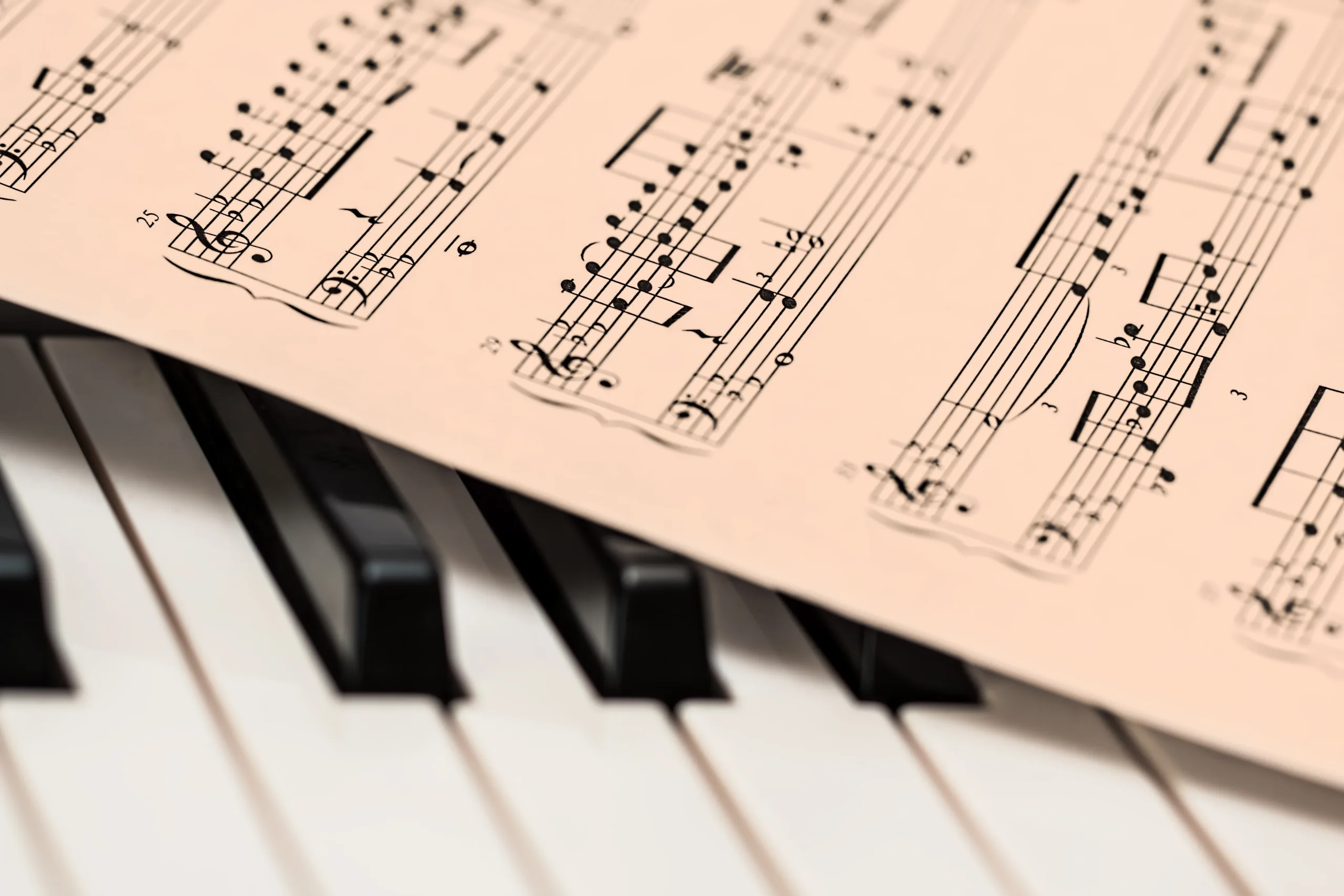Selecting a musical instrument is a profound and contemplative undertaking. It entails a journey of self-discovery, where the seamless interplay of your interests, abilities, and ambitions becomes paramount. This guide aims to empower you with the tools necessary to embark on this transformative journey, enabling you to uncover an instrument that becomes an extension of your artistic identity.
Throughout the following sections, we will navigate the multifaceted realm of instrument selection, exploring various factors that should influence your decision-making process. By examining your musical preferences, physical attributes, and available resources, we will assist you in discovering the instrument that resonates most profoundly with your unique musical sensibilities.
Moreover, we will emphasize the significance of seeking expert guidance and embracing a spirit of experimentation. By consulting instructors, engaging with rental programs, and immersing yourself in the experience of playing different instruments, you will gain valuable insights that will refine your decision-making process and ensure an instrument that captures your imagination and enhances your musical journey.
Prepare yourself for an illuminating exploration that will transcend mere selection and evolve into a transformative experience. Through diligent introspection, comprehensive research, and an open mind, you will find an instrument that harmonizes with your deepest artistic aspirations. Let us embark on this musical odyssey together as we navigate the path to finding your ideal musical match.
Understanding Your Musical Preferences
One of the fundamental aspects of selecting the right musical instrument is understanding your musical preferences clearly. It entails exploring different genres, styles, and types of music to identify the ones that resonate most deeply with you. By delving into your musical preferences, you can better align your instrument choice with the music that ignites your passion and inspires you to create. 
Exploring Different Genres and Styles
It begins by immersing yourself in diverse musical genres and styles. Listen to various artists, bands, and ensembles spanning classical, jazz, rock, pop, folk, world music, and more. Pay attention to the instrumentation and the instruments that stand out to you. Note the emotions evoked and the connection you feel with different musical expressions.
Recognizing Instruments Associated with Your Preferred Genres
As you explore different genres, take note of the instruments commonly associated with each style. For example, if you are drawn to classical music, you’ll encounter orchestral instruments like the violin, cello, or flute. If jazz captures your interest, instruments such as the saxophone, trumpet, or piano are prevalent. This awareness can guide you toward instruments that align with the genres you are most passionate about.
Considering Emotional and Artistic Connection
Beyond genres and instrument associations, consider your emotional and artistic connection with specific instruments. Reflect on the sounds that resonate with you profoundly and the instruments that evoke the desired emotions or moods. For example, you may be captivated by the soulful sound of a bluesy guitar or the haunting melodies produced by a violin. Understanding these personal connections will help you find an instrument that resonates with your artistic vision.
Assessing Physical Factors
Assessing your physical attributes is an essential aspect of choosing a musical instrument. Different instruments require specific physical abilities and coordination. By considering your physical factors, you can select an instrument that complements your unique strengths and abilities, enhancing your playing experience and facilitating skill development.

Hand Size and Dexterity
Consider the size of your hands and the level of mastery you possess. Instruments like the piano, guitar, or drums may require good finger coordination and agility. Instruments with smaller necks or shorter finger spans, such as the ukulele or flute, might be more suitable if you have smaller hands. On the other hand, larger hands may find comfort in playing instruments with wider fretboards, such as the bass guitar or cello.
Physical Strength and Endurance
Certain instruments, like the drums, require physical strength and endurance. Percussion instruments necessitate strong arm muscles and coordination to maintain rhythm and produce sound. String instruments, such as the violin or cello, require a degree of physical strength to press down on the strings and produce clear notes. Consider your physical strength and assess whether you have the stamina to play these instruments comfortably.
Lung Capacity and Breath Control
Lung capacity and breath control are crucial for wind instruments such as the flute, trumpet, or saxophone. Evaluate your lung capacity and determine if you can sustain long controlled breaths. Wind instruments require proper breath control to produce clear and sustained tones. If you have a strong lung capacity and can control your breath, wind instruments may be a good fit for you.
Posture and Body Alignment
Musical instruments often require maintaining proper posture and body alignment. Instruments like the violin or cello necessitate holding the instrument against the body, requiring good posture and back support. Brass instruments, such as the trombone or tuba, demand appropriate breath support and embouchure, which can be influenced by jaw alignment and facial muscle control. Evaluate your posture and body alignment to ensure compatibility with instruments that require specific positioning.
Researching Instrument Options
Thoroughly researching instrument options is crucial when choosing the right musical instrument. Each instrument possesses unique characteristics, playing techniques, and sonic qualities. By conducting in-depth research, you can gain insight into different instruments, allowing you to make an informed decision based on your musical preferences and goals.

Exploring Instrument Categories
Begin by familiarizing yourself with the various categories of musical instruments. These categories include string instruments (e.g., guitar, violin), woodwind instruments (e.g., flute, clarinet), brass instruments (e.g., trumpet, trombone), percussion instruments (e.g., drums, xylophone), and keyboard instruments (e.g., piano, organ). Understand the distinctions between these categories and the types of instruments they encompass.
Understanding Instrument Characteristics
Each instrument has unique characteristics that define its sound and playing style. For example, string instruments offer versatility in tone production through techniques like plucking or bowing, while percussion instruments provide a range of rhythmic possibilities through striking or shaking. Research the sonic qualities, expressive capabilities, and technical demands of different instruments to determine which aligns with your musical aspirations.
Exploring Instrument Repertoire
Consider the repertoire and musical genres associated with specific instruments. Certain instruments are more commonly featured in classical music. In contrast, others excel in jazz, rock, folk, or world music. Explore the genres and styles that interest you most and investigate the prevalent instruments within those genres. This exploration will help you identify instruments that align with the musical language you wish to pursue.
Seeking Expert Opinions and Resources
Leverage the knowledge and expertise of music teachers, instructors, or professional musicians. Consult with individuals who have experience playing and teaching various instruments. They can offer valuable insights into different instruments’ challenges, rewards, and nuances. Additionally, utilize resources such as books, online tutorials, instrument catalogs, and reputable music websites to expand your understanding of instrument options further.
Music Teachers and Instructors
Engage the expertise of music teachers and instructors who specialize in different instruments. They possess in-depth knowledge and experience that can guide you in selecting an instrument based on your interests, aptitude, and goals. Take advantage of their advice; they can offer valuable recommendations and even provide trial lessons to help you get hands-on experience with different instruments.

Instrument Rental Programs and Trial Opportunities
Music schools, community centers, and instrument shops offer rental programs or trial opportunities. Use these resources to borrow or rent instruments for a limited period. It allows you to play and explore different instruments without committing to purchase upfront. By testing various instruments, you can assess their playability, comfort, and personal connection, aiding you in making an informed decision.
Music Schools and Community Centers
Consider enrolling in music schools or community centers that provide introductory classes or workshops. These institutions often offer group lessons or short-term courses where you can try out different instruments under the guidance of experienced instructors. Such programs provide a structured learning environment and exposure to various instruments, helping you gain insight into their respective challenges, techniques, and overall appeal.
Online Communities and Forums
Online communities and forums dedicated to music enthusiasts can be an invaluable resource. Engage with fellow musicians, ask questions, and seek recommendations based on their experiences with different instruments. Online platforms can provide a wealth of knowledge, personal anecdotes, and advice from a diverse community of musicians, aiding your decision-making process.
Instrument Specialists and Music Stores
Visit instrument specialists and reputable music stores that offer a wide selection of instruments. Speak with knowledgeable staff who can provide detailed information about instruments, allowing you to compare features, quality, and price ranges. Physical interaction with instruments can provide tactile feedback, enabling you to assess comfort, ergonomics, and overall appeal.
Trial and Error
Embracing a spirit of trial and error is essential when choosing a musical instrument. Engaging in hands-on exploration and experimentation allows you to discover which instrument resonates harmoniously with your abilities, preferences, and musical goals. You can gain valuable insights and refine your decision-making process through trial and error.

Hands-On Experience
Seek opportunities to play different instruments whenever possible physically. Whether through rental programs, music stores, or borrowing instruments from friends, actively engage in hands-on experience. Spend time experimenting with various instruments, getting a feel for their playability, sound, and ergonomics. This direct interaction will better understand how each instrument suits your playing style.
Practice and Exploration
Dedicate time to practice and exploring different instruments. Set aside regular practice sessions where you can delve into the intricacies of playing each instrument. This commitment will enable you to feel comfortable and familiar with the instrument’s techniques and nuances. As you progress, you’ll uncover new possibilities, challenges, and levels of enjoyment associated with each instrument.
Feedback and Reflection
Seek feedback from instructors, mentors, or experienced musicians as you experiment with different instruments. They can provide valuable insights into your progress, strengths, and areas for improvement on each instrument. Reflect on your own experiences and listen to your intuition. Pay attention to the instruments that make you feel inspired, motivated, and connected on a deeper level. This introspection will guide you toward the instrument that resonates most profoundly with your musical journey.
Openness to Change
Be open to the possibility of changing your instrument choice along the way. As you explore and develop your musical skills, your preferences may evolve. It’s normal to reassess your decision and switch to a different instrument if you feel a stronger connection or newfound passion. Remember that your chosen instrument should bring you joy, fulfillment, and a sense of artistic expression.
Patience and Perseverance
Exercise patience and perseverance during the trial and error-process. Learning a new instrument takes time, dedication, and effort. Be prepared to encounter challenges, setbacks, and moments of frustration. Understand that progress may be gradual, and it’s essential to maintain a positive mindset and a willingness to persevere through difficulties. The journey of trial and error is as much about personal growth and self-discovery as it is about finding the right instrument.
In conclusion, selecting the ideal musical instrument is deeply personal and transformative. By understanding your musical preferences, assessing your physical attributes, researching instrument options, seeking guidance and resources, and embracing trial and error, you can embark on a journey leading to an instrument that resonates harmoniously with your artistic identity.
Remember, this decision is not one to be rushed or taken lightly. Take the time to explore different genres, listen to various artists, and connect with the emotions evoked by different instruments. Consider your hand size, lung capacity, physical strength, and posture, ensuring compatibility with your chosen instrument. Delve into research, seek expert advice, and immerse yourself in the experience of playing different instruments.
The world of music awaits you. Take that leap of faith, and let your passion soar through the harmonious union of you and your instrument. Unleash the power of your musical expression and immerse yourself in the transformative experience that awaits. Start your musical journey today, and let the enchantment of music be your everlasting companion.


